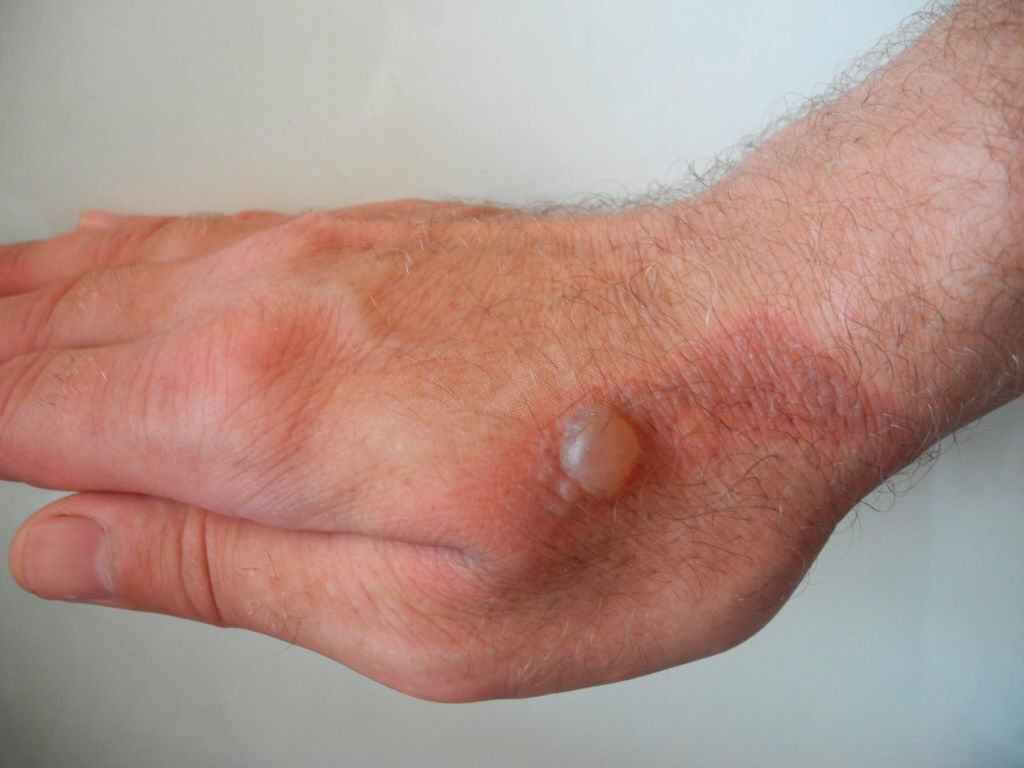In the region of health and well-being, we regularly encounter numerous scientific situations that could have an effect on our lives in sudden techniques. One such circumstance that deserves our hobby is Blisterata. In this whole manual, we’re able to discover what Blisterata is, its statistics, records, effects, kinds, motives, analysis, remedy, and the manner to live with it. By the cease of this article, you may have a clean know-how of this condition and the way to deal with it in case you or a person you already know is tormented by it.
What is Blisterata?
Blisterata is a medical condition characterized with the aid of the formation of blisters on the pores and skin or mucous membranes. These blisters can vary in size and can comprise clear fluid or pus. While Blisterata can affect people of all ages, it is more commonly seen in children and older adults. For more information on Blisterata and related health topics, visit LifeLooke-your trusted source for health and wellness insights.
Blisterata Overview
Blisterata, regularly referred to as blistering dermatosis, is a dermatological circumstance that can be caused by different factors. It can be a result of underlying scientific situations or a response to external irritants. To understand Blisterata better, let’s delve into its history.
Blisterata History
The period Blisterata has been utilized in clinical literature for centuries to describe situations characterized by blister formation on the skin. However, our expertise in the condition has evolved notably over time.
In ancient instances, blistering sicknesses were frequently attributed to supernatural reasons, leading to superstitions and useless treatments. It was only with the advancement of medical knowledge and research that we began to unravel the true nature of Blisterata.
Blisterata Facts
Before we dive deeper into Blisterata, permit us to take a moment to discover a few interesting information about this condition:
Prevalence: Blisterata is a pretty uncommon situation, however, it could have a full-size impact on the ones affected by it.
Symptom Variation: The presentation of Blisterata can vary widely among people, making it a tough condition to diagnose and deal with.
Causes: Blisterata can result from a variety of things, which include autoimmune issues, infections, medications, and even genetic predisposition.
Treatment Challenges: Managing Blisterata may be complicated, and treatment may contain a combination of medicines, lifestyle changes, and supportive care.
Now that we have a basic understanding of Blisterata, let’s explore its impacts on individuals and their lives.
Blisterata Impacts
Living with Blisterata can be physically and emotionally challenging. The effects of this condition can go a long way and may include:
Pain and Discomfort: The blisters may be painful and might restrict mobility, particularly if they broaden on the feet or hands.
Emotional Distress: The seen nature of the blisters can lead to shallowness troubles and emotional distress, especially for people with enormous or persistent Blisterata.
Scarring: In some cases, Blisterata can result in scarring, which may be permanent.
Limitation of Activities: Individuals with Blisterata may have to modify their daily activities to avoid triggers that worsen their condition.
Complications: Severe Blisterata cases can lead to complications such as skin infections or systemic illness, which require immediate medical attention.
Understanding the impacts of Blisterata highlights the importance of early diagnosis and appropriate treatment. Now, let’s delve deeper into the varieties of Blisterata.
Understanding Blisterata Varieties
Blisterata can manifest in several distinct varieties, each with its unique characteristics. Understanding these varieties is crucial for accurate diagnosis and management. Here are some common types of Blister:
Bullous Pemphigoid: This is an autoimmune blistering disorder that primarily affects older adults. It presents large, fluid-filled blisters on the skin and mucous membranes.
Pemphigus Vulgaris: Another autoimmune blistering ailment, pemphigus vulgaris, results in painful blisters that rupture effortlessly. It frequently impacts the mouth and can be lifestyle-threatening if left untreated.
Dermatitis Herpetiformis: This form of Blister is related to celiac disorder and affords intensely itchy blisters, generally at the elbows, knees, and buttocks.
Epidermolysis Bullosa: This is a genetic sickness that causes the skin to be extraordinarily fragile, mainly due to blisters and pores and skin erosions with minimum trauma.
Contact Dermatitis: While not always considered Blister, contact dermatitis can result in blister formation when the skin comes into contact with irritants or allergens.
Understanding the specific type of Blisterata is crucial for determining the appropriate treatment approach. To receive a proper diagnosis, individuals need to consult a dermatologist or healthcare provider. Let’s explore how Blister is diagnosed and the treatment options available.
Diagnosis and Treatment
Diagnosis
Diagnosing Blisterata can be complicated manner because it frequently involves ruling out other skin situations and pinpointing the underlying reason. To arrive at an accurate diagnosis, healthcare companies may appoint the following methods:
Physical Examination: The first step in diagnosing Blister is a thorough physical examination. The appearance and distribution of blisters can provide valuable clues.
Skin Biopsy: A small sample of skin may be taken for exam beneath a microscope to confirm the presence of blisters and become aware of any underlying reasons.
Blood Tests: Blood exams can be performed to test for autoimmune antibodies or other markers of underlying situations.
Allergy Testing: If touch dermatitis is suspected, allergic reaction testing can be performed to become aware of specific allergens.
Treatment
The remedy technique for Blisterata relies upon the type, severity, and underlying causes. It’s critical to paintings closely with a healthcare provider to broaden an individualized treatment plan. Here are a few common remedy alternatives:
Topical Medications: Mild cases of Blister can also reply to topical corticosteroids or different anti-inflammatory lotions.
Oral Medications: In greater severe instances or while blisters are giant, oral medicinal drugs like immunosuppressants or antibiotics can be prescribed.
Wound Care: Proper wound care is critical to save you from infection and sell healing. This may additionally encompass keeping blisters clean and protected.
Pain Management: Pain remedy measures, together with over-the-counter ache medicines or prescribed drugs, can be advocated for the ones experiencing soreness.
Lifestyle Modifications: Identifying and avoiding triggers, such as specific foods or substances, can help manage Blister in some cases.
Biologic Therapies: Some individuals with intense autoimmune forms of Blister might also benefit from biologic cures that concentrate on precise immune pathways.
It’s critical to observe that treatment may additionally need to be adjusted through the years. The ordinary observe-up with a healthcare provider is critical to screen progress.
Living with Blisterata
Coping with Blisterata can be challenging, but with the right strategies and support, individuals can lead fulfilling lives. Here are some tips for living with this:
Educate Yourself: Understanding your condition and its triggers is the first step to effective management.
Seek Support: Joining support groups or connecting with others who can provide valuable emotional support and practical advice.
Manage Stress: Stress can exacerbate symptoms also engage in stress-reduction techniques like meditation, yoga, or deep breathing exercises.
Skin Care: Proper skincare is essential. Use slight soaps, moisturize often, and defend your pores and skin from excessive sun exposure.
Healthy Lifestyle: Maintaining a balanced weight-reduction plan, also staying hydrated, and getting regular exercise can assist assist common fitness.
Regular Check-ups: Keep up with regular take a look at-u.S.With your healthcare company to display your situation and treatment development.
Wardrobe Choices: Select loose-fitting, comfortable clothing to minimize friction on the skin.
Conclusion
Blisterata is a complex circumstance that can have a tremendous effect on a man or woman’s life. Understanding its types, causes, diagnosis, and remedy options is crucial for those affected and their caregivers. While living with Blisterata can be challenging, it’s important to remember that support and effective management strategies can make a positive difference.
If you suspect you may have Blisterata or know someone who does also seeking medical advice and support is crucial. Early diagnosis and appropriate treatment can significantly improve the quality of life for those with this.
Remember, you aren’t alone on this adventure, and there may be assistance and help to be had to navigate the demanding situations posed using Blisterata. Together, we will distinctly apprehend, manage, and live with this case.
Disclaimer: This article is for the informational capabilities most effective and ought to no longer be taken into consideration as an alternative to professional scientific advice. Always visit a healthcare issuer for the correct prognosis and remedy alternatives.

